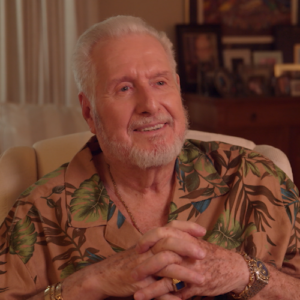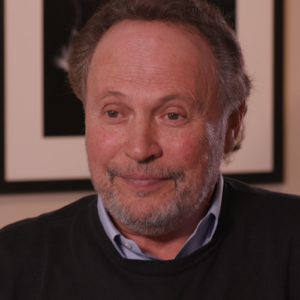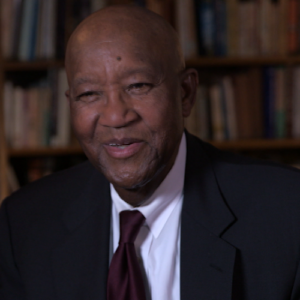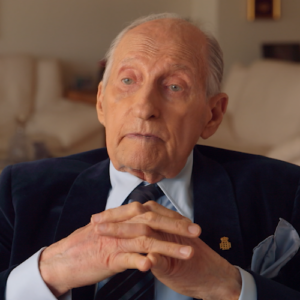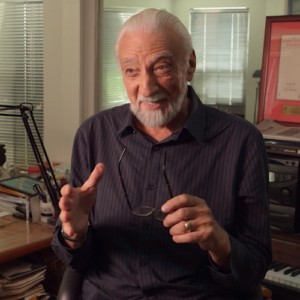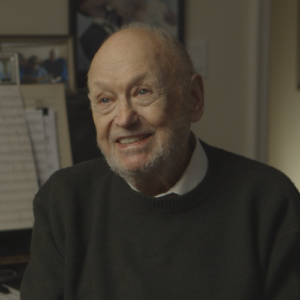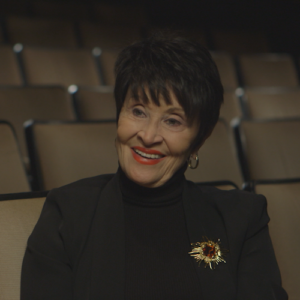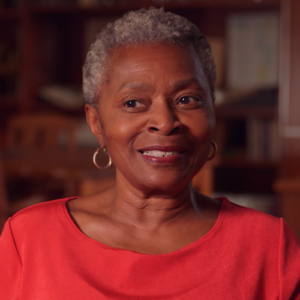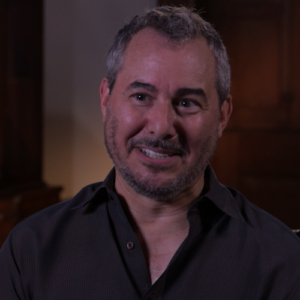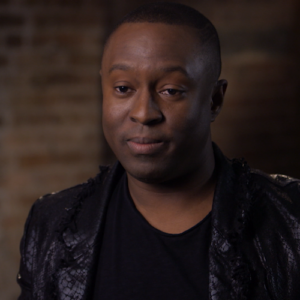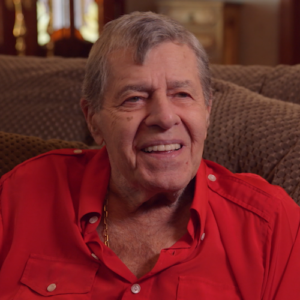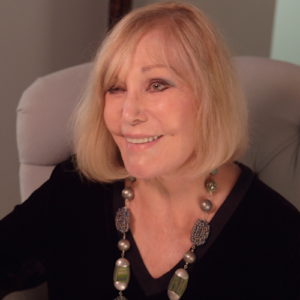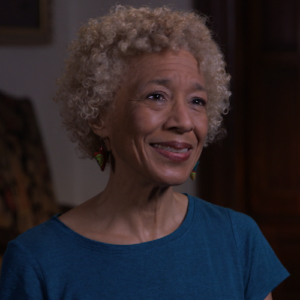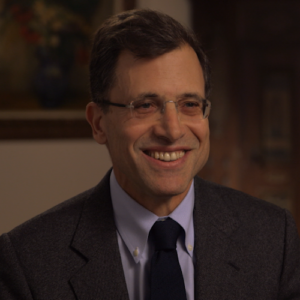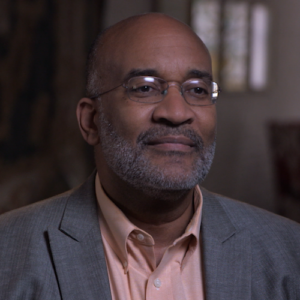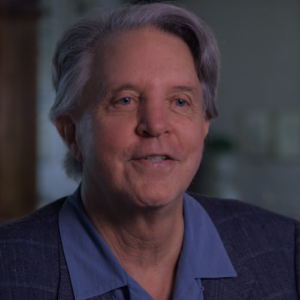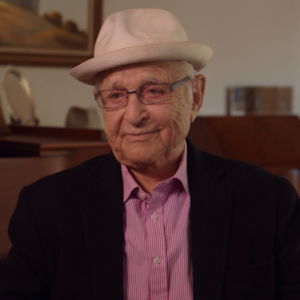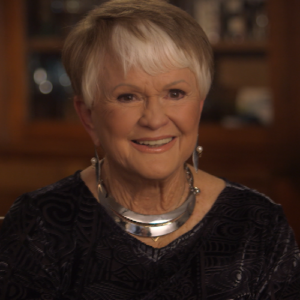Emilie Raymond: Emilie Raymond. I’m an associate professor of history at Virginia Commonwealth University.
Interviewer: Your work with the book I read you concentrate on celebrities who support the civil rights movement. And, you know, as opposed to politicians or religious leaders. What were the ways that celebrities helped the civil rights movement and do your research?
Emilie Raymond: Okay. One thing that celebrities can do was draw attention to the civil rights movement. They had the ear of mainstream publications. They had a lot of fans, both black and white fans and mainstream fans. And they were able to reach audiences that movement organizations and movement activists couldn’t necessarily do. So just getting attention was one really important thing. They also had a lot of benefits and fundraisers for the civil rights movement. So there is an incredible amount of money for movement organizations, and in some cases they helped strategize with the movement movement leaders sort of working behind the scenes. And they also served as cheerleaders in a lot of cases. I think for a lot of activists, just knowing that a celebrity knew who they were recognized, their work really lifted their morale and made them feel that their work really meant something and was being heard by the outside world. So I think that morale thing, it’s it’s harder to quantify, but it’s something that was very real. Right.
Interviewer: Who were some of the most important celebrities involved in the movement from 46 to 56? And your book use the term the big six.
Emilie Raymond: Or the leading.
Interviewer: Six, six, six?
Emilie Raymond: Yeah, I sort of divide it up into a group. There’s this kind of general stars for freedom, I call it, and then sort of look at them across the spectrum. So the leading six is Sammy Davis Jr. Harry Belafonte. Sidney Poitier. Ossie Davis. And Ruby Dee and Dick Gregory. And they are categorized as such because they were the earliest, most consistent and most effective celebrity activists involved with the movement. Then there’s a number of supporting characters like Diahann Carroll and Lena Horne and Dorothy Dandridge, Marlon Brando, Paul Newman, Charlton Heston. And they were involved in some cases in very important ways, but weren’t as consistent or as involved in some of the behind the scenes in the politics of the movement. And then there are a few sort of bit players, I guess you could call them people who came to a couple of rallies or donated money a couple of times. Yes. Shelley Winters is a great example. Elizabeth Taylor is another good example. And then but by and large, most celebrities did not support the movement at all. They either they were scared to or they felt uncomfortable or they were worried that the publicity might get away from them and they didn’t. So the leading six were really unusual and took a lot of risks by being involved with the movement.
Interviewer: And the you know, the organizations give the audience a sense of the organizations that they helped during that period of some of the social civil rights organizations.
Emilie Raymond: They helped the largest and the one that have been founded the earliest and the largest was the NAACP, the National Association for the Advancement of Colored People. And in the 1950s, they had kind of a membership crisis. Their membership had peaked in the late 1940s right after World War Two. But by about the mid 1950s, the ACP had a financial and membership crisis, largely because a number of local and state Southern governments brought lawsuits against the organization. They blamed ACP for the Montgomery bus boycott, sort of erroneously, but nevertheless blame them for the boycott and challenged the right to exist. And on top of that really went after the known members of the organization, published their names in newspapers and things along those lines. So membership had dropped. The organization was running a deficit. So to have celebrities willing to do benefits and membership drives for the end of the ACP was really important. And then Martin Luther King’s organization, the Southern Christian Leadership Conference that was founded sort of out of the McGovern bus boycott. That was the other big one on the on the scene. And a number of celebrities were involved with that. But it was not a membership organization. So their role with that was to raise money or in Belafonte’s case, to strategize with King.
Interviewer: So Harriet was close to the SCLC? Yes.
Emilie Raymond: Yeah. And Belafonte was close with both the SCLC. And the Student Nonviolent Coordinating Committee snack. That was a student organization devoted to direct action. And in their case, they were oftentimes overshadowed by the ACP and the OCLC, And people would donate money to snack, for example, but they’d send it to King and then the SCLC would keep the money. So one thing that celebrities could really do for work was to give them recognition. You know, this is a separate organization and they have separate finances. They need money separately. A lot of people just didn’t know who snick was. So people like Davis and and Belafonte and Dick Gregory especially brought attention to them.
Interviewer: But it seems like from reading your book, Sammy, you seem to be seem to have this from what I could. David seem to have a stronger relationship with the NAACP. Mm hmm.
Emilie Raymond: Yes. Davis’s earliest relationship with the civil rights organization was the NAACP. Starting in 1957, he did an Apollo Theater benefit that raised about $5,000 for the organization, which was very small compared compared to his later fundraising efforts. But that was the first one. And after he did that benefit, he also was involved in a membership drive for the NAACP, and he remained active with ACP all the way through the 1960s with the benefits and the membership drives and so on. He also did some fundraising for Martin Luther King’s organization, and and in one case, he produced and starred in a show called A Tribute to Martin Luther King and January 1961. And he brought his Rat Pack friends and they all performed for free. And it raised $22,000 for the SCLC and the SCLC. His budget that year, it was only about mid $60,000, $66,000, I think. So that was a huge amount of money for that organization. And he also did fundraising house parties for the student group. So Davis was involved and all three of the big ones.
Interviewer: And it was connected to, I mean, which celebrities supported the Panthers? I know. Brando. Mm hmm. Savvy. Whether the celebrities were helping the Black Panthers when they came about.
Emilie Raymond: Yes. Brando was mostly through his friendship with Bobby Seale, and Davis was not Sammy Davis Jr was not intricately involved with the Panthers, but Ossie Davis and Ruby Dee and Dick Gregory all started a Panther defense fund after a number of 22. The Panther 22, as they were known, had been arrested for alleged attacks on police officers or alleged involvement in bombings. So after their arrest, so after their arrest, Dick Gregory, Ossie Davis, Ruby Dee started this fund to raise awareness and money for their their legal expenses. And Sammy Davis Jr. Behind the scenes, he helped fund a film about the Panthers and independent film. But that’s the extent of his involvement, as far as I know.
Interviewer: It was really kind of fascinating reading your book. In the 21st century. And when you think about the civil rights movement and the celebrity activist celebrities involved in the movement, Harry’s name is first, first and foremost. And Sammy is like a blip that the people. Mm hmm. One thinks is safe. And even the NAACP doesn’t seem to have the same kind of impact that the SCLC sees. Dr. King, at today’s people who are just remembering the history. Why do you think that’s.
Emilie Raymond: Well, I think since Belafonte is still alive, he has done a he has done a great job of sort of opening people’s eyes to his involvement in the movement. And the archival records are now being opened as well. So we can sort of follow up on that as historians and Davis die and 20 years ago. So you can’t continue to sort of say what he did. But I also think it is partly a problem of his with his public persona, that he had had a much more controversial public image in terms of people thought that he was sort of trying too hard sometimes, that he, in his efforts to integrate show business, perhaps was also trying to be white. So there are people who felt uncomfortable with that aspect of his personality. So the civil rights organizations, on one hand, I think they really benefited from his from Sammy Davis Jr, his involvement with the Rat Pack, for example. But at the same time, they didn’t necessarily like his involvement with the Rat Pack, but he made $200,000 for the Urban League and a fund raiser with the Rat Pack. He made $22,000 from Martin Luther King in one night with the Rat Pack, and he wouldn’t have been able to do that without that relationship with the Rat Pack. So I think those things make it difficult for people to to appreciate his his activism and they don’t think of him as an activist. But Davis, I believe that he was an activist with the fundraising and also his efforts in Hollywood to try to promote black interests in Hollywood as a as a producer and along those lines.
Interviewer: So you tell us about his side of the fifties. I mean, I grew up watching him, you know, as a young man in my early teen shows.
Emilie Raymond: Mm hmm.
Interviewer: It was Sammy’s persona. I mean, he was accepted. He was rejected. How was he perceived by both white people and black people in the fifties?
Emilie Raymond: Well, his the the mainstream public largely knew Davis from these television variety shows. So he had the benefit of being able to just go on there and be himself that he wasn’t in a scripted show because most of the scripted shows portrayed African-Americans in a rather unflattering light so that he could go on and be himself, I think was really important. And he seemed to have a persona that was both daring and deferential, where he was doing things that other black performers had not done by impersonating famous whites like James Cagney or Jerry Lewis, his mentor. So that was kind of shocking. And he was doing something different that seemed daring. But at the same time, he he oftentimes did seem sort of starstruck on those shows. He was he was very young. He’d come from vaudeville. To be on TV was really exciting for him. And he did seem to sort of go out of his way to be deferential to some of the television hosts.
Interviewer: It’s an Uncle.
Emilie Raymond: Tom. Yeah, some people would say that that he’s you know, you’re saying yes, sir, and yes, ma’am. And just seemed so grateful to be on the shows that it was an unusual combination.
Interviewer: Talk about his relationship with working on being on Eddie Cantor children at the time. What did that mean? And is that incident with Eddie Cantor White Is Brown Talk about him working with Eddie Cantor.
Emilie Raymond: Yeah. When he was on Eddie Cantor show, which was a pretty popular variety show after a performance in which I think he was tap dancing and working really hard, you know, and sweaty by the time it was all over. Cantor came over, put his arm around Davis and mopped his bra around Davis’s bra. And this just seemed too intimate, I think, for a number of viewers that it showed that they were friends off camera, that it wasn’t just a guest and a host. And just see, I guess, the idea of of not just hugging, but doing an intimate gesture like that was uncomfortable. So there were a lot of protests about that particular episode. And the sponsors threatened to pull their sponsorship from the show. And Cantor said, no, I’m bringing it back on. And Davis didn’t come back on for two more two more episodes, and one of which I saw. He just kept hugging Davis over and over as if to just say, Look, I can hug him.
Interviewer: But, you know, it’s interesting that black people like Sammy, I mean, you know, on one hand, you can see that he’s sort of embracing white people and white audiences.
Emilie Raymond: Mm.
Interviewer: What did it mean to the to the black community see Sammy become a success, but also in some ways maybe act too white?
Emilie Raymond: MM He received a lot of very positive coverage, and black newspapers and a lot of columnists really followed him and praised him. And we’re really proud of him because he was such a huge star, bigger than anyone else, it seemed like. So there is definitely a pride, I think, in his rise. Um, but there were some columnists who wrote more negative things and accused him of trying to be white. Forgetting his own people, not doing enough to sort of help African-Americans and in show business in particular. And this really bothered Davis. He complained about it a lot. He wrote about it in his book. Yes, I can. That’s one of the big themes of his book, is complaining about that kind of negative coverage. But it also seems to have helped give the impetus to his involvement with civil rights organizations, that the movement was a way for him to stay connected to black audiences. And that would perhaps answer some of those critiques. I mean, I think that was one factor of many sort of pushing him toward the movement.
Interviewer: So besides, you know, being a great performer, you know, he was also controversial because of his interest in white women. And what that means is in terms of how she was perceived in the press and by the public.
Emilie Raymond: It does seem to have I mean, a lot of it wasn’t covered in the press. He didn’t until the Kim Novak scandal. I don’t think a lot of people really knew that much about it outside of Hollywood. But then, of course, when he married my Brit, that received a lot of coverage. And so I think that was just an additional factor that he was I think he still would have been received some of the same critiques because so many of his friends and mentors and the show business community were also away. So then if you just add on his dating preferences to it. But I also got the sense from some other things that I’ve read that he just loved women in general and he was quite a womanizer. So it’s not only white women that he was dating or whatever, he was also that that’s what he got the most coverage for.
Interviewer: So. So was he a guy who. Do you think he did things just to be a provocateur? Was it was it was it really something that he was serious about? Like they embraced Judaism? Did he do these things just to get public awareness or was he really serious about the civil rights movement, about praising Judaism? What’s your.
Emilie Raymond: Opinion? My opinion is that he was serious. I mean, he seemed to the conversion to Judaism happened during a crisis for him. You know, he was in the hospital. It wasn’t clear if he would ever be able to perform again because he was injured so dramatically, he might not have been able to dance. And that was a big part of his his routine. So the fact that it sort of came out of that crisis and it was something that he stayed with the rest of his life, he didn’t abandon it when things got better and he went to Israel and he went to temple and he had a traditional Jewish marriage converted to Judaism, too. So I got the sense that it was something that really meant something to him and that it deepened his appreciation for the civil rights movement as well. Because of some of the connections between Jewish history and African-American history as far as the movement. I also got the sense that that was not just to be a provocateur, but something that, you know, I thought he in interviews, he spoke very eloquently about the movement and what its goals were and what its approach was. He seemed to understand it, and he might not have been as engaged in some of the behind the scenes politics as Belafonte, but he seemed to have a lot of at stake in it. And he was one of the few people who was involved in several civil rights organizations. Most people were not. Most people chose one or maybe two that he was involved in through. And that speaks to his commitment as well, I think.
Interviewer: But you are refiling your book. I always get the sense that, you know, like, for example, when they went down to Selma kicking and screaming.
Emilie Raymond: It is terrifying to go.
Interviewer: There that only Belafonte that told them to go and go. I mean, but your book gave me a different sense of that.
Emilie Raymond: Well, that’s sort of true. And Belafonte didn’t pressure him to go. Davis did not want to go. He had actually joked with Martin Luther King about it, saying, I’ll go anywhere you want me to go, as long as it’s not down south, because he was scared to go. And I think he would have been scared anyway. And then Bobby Kennedy told him that there was a price on his head in Alabama. So that made him even more frightened. So Davis proposed this Broadway answer, Selma benefit, and he said he could raise $150,000 for the movement, but he really wasn’t planning on actually going to Selma or Montgomery. And Belafonte said, you’ve got to go. You know, you’ve got to go. And finally, he flew in for one night. So finally he did go, but he went again a year later to the Meredith march. He actually chartered a plane and brought some other Hollywood celebrities. So I would not call him a frequent visitor to the South after that. But it did seem to mark a turning point for him a little bit.
Interviewer: And so he was committed. It wasn’t just like, you know, I’m only going to do it because it will be a good that’ll be a good spotlight for me to do it.
Emilie Raymond: Yeah. And I don’t think he really he didn’t get much media attention when it was there. You know, he was part of a rally the night before and there were there’s not a lot of news coverage of that. And there might have been a shot of him on CBS News walking into Montgomery. But that’s about it. It’s not like he was dominating the cameras.
Interviewer: And what’s amazing to us is his is his being involved in the march on Washington and him deciding not to be up on the podium. Right. With the people.
Emilie Raymond: Yeah, that’s right. Sitting in the audience, just talking with people, letting people from from the south know that he cared about them.
Interviewer: So tell us about Sammy’s participation in the March on Washington.
Emilie Raymond: During the March on Washington. Sammy Davis Jr was there. He did the walk from the Washington Monument to the Lincoln Memorial, but he didn’t go up on stage with a lot of the other dignitaries, the civil rights leaders and some of the celebrities who were part of this arts group they called themselves who flew in from Hollywood. So whereas people like Marlon Brando and Burt Lancaster were on stage, Sammy Davis Jr wanted to be out in the crowd and especially to talk to average folks, people who’d come from the South and let them know he was glad they were there and that they weren’t forgotten. And there were outsiders who knew what they were doing.
Interviewer: Well, I know, Sammy, you know, when we think about this, how would you compare Sammy’s activism to that of Poitier and Belafonte? I mean, when I was working years ago on this documentary about the fact that he told this great story about how in he flew into I think it was Alabama and died in the dead of night and.
Emilie Raymond: He was chased by the KKK. Yeah.
Interviewer: But Sidney was saying, I’m never going to see this again, because always having someone is at the forefront, you know?
Emilie Raymond: Right.
Interviewer: Really afraid. What was how do you compare the activism of 48 Belafonte?
Emilie Raymond: Well, Davis, he raised more money than any other celebrity. Belafonte raised a lot of money, too, but Davis raised more. So I consider him sort of the benefactor of the movement. He raised about $750,000 for movement organizations, which is about five and a half million dollars in today’s terms, whereas Belafonte also a fund raiser. He was more of a strategist who worked very closely with Martin Luther King and his top aides and working very closely with the snick with the student organization. And Poitier was more of a spokesperson for the movement. He, according to a number of them, the civil rights activists who I interviewed, they felt that he could really articulate the civil rights message better than any other celebrity. And he was the most successful in Hollywood. And he emceed or hosted a number of benefit shows. But it’s really Dick Gregory who was willing to go down south more than anybody else. He was he was the one who was more on the front lines than any other celebrity in terms of being willing to march and being willing to go to to get arrested and being willing to go to jail. Very few celebrities were willing to do that. And Sammy included and Belafonte included as well. I mean, he did go on a night mission that one time, but he generally was not in the South either. Right.
Interviewer: So was really Dick Gregory was at the forefront of that.
Emilie Raymond: Yeah. He went to. A number of times.
Interviewer: He talked about what he felt about Sammy’s relationship with the Rat Pack. Talk about Sammy and the rest of the Rat Pack. Rat Pack. Some people said he was a mascot. Some people say he was part of the group. It was Sammy’s relationship with the Rat Pack and Dean and Sinatra and Joey in Washington.
Emilie Raymond: Uh huh. Well, he became well, David said. Long admired Frank Sinatra. They had first met in the early 1940s, and Sinatra was ten years Davis a senior, and he just really admired his career as he went solo and as he broke into film. And at the same time, Sinatra always treated Davis as a person, you know, not someone who was just off on the sidelines. Davis felt like Sinatra treated him with more respect than any other sort of mainstream white star when they were out touring in concerts and so forth. So he’d always admired Sinatra. And then once he moved to Hollywood, he sort of became more friendly with him. And part of this social group that Humphrey Bogart kind of put together. And that was the original Rat Pack that after Bogart died, Sinatra sort of reconfigured it and gotten his closest friends, and he considered Sammy one of his closest friends, Joey Bishop, Peter Lawford and Dean Martin, and had the idea to make a film. And he told Davis that he would cast him in Ocean’s 11, which was another big deal for him for Davis, and that he would receive top billing, that he would receive equal pay to the rest of the top billed stars. So in many respects, Davis felt like he was treated very respectfully by Sinatra. But in their actual show that they did at the The Sands Hotel while they were filming, there were so many ethnic jokes and they were all they were all making fun of each other all the time. But Davis was often made fun of for his small stature and for his race, and he sort of participated in it. So there was a reaction where some critics felt like he was going too far, that he was being a buffoon, I think as as Belafonte put it, and that he was aligning himself to be the butt of too many jokes, too much of a scapegoat.
Interviewer: Yeah, right. When Steve Martin picks him up, did you get a sense that he started to feel uncomfortable with this portrayal of him during these, you know, events with the Rat Pack at these shows at the restaurant?
Emilie Raymond: Davis later admitted that he was a little bit of a mascot, a little bit of a lackey. But at the same time, he felt like that was just kind of part of the show, that it wasn’t a negative comment on their relationship. And in many cases, Sinatra often proved his loyalty to Davis. And a really good example is that Martin Luther King tribute where Davis said, Look, I want to I’ve been asked to put together a benefit, will you guys perform for free? And they all said that they would. And Sinatra briefly reconsidered because he wanted King to endorse John F Kennedy in the presidential race, and King would not. And Sinatra was like, Well, I’m not going to do the benefit. But then he changed his mind. And I think that’s largely because he was loyal to Davis, and it was a huge success. It was the highest profitable fundraiser that Carnegie Hall had ever had. And and I think it also brought Sinatra into the movement for the first time. He was known to be somebody who was tolerant and liberal on racial matters, but he was not involved in the civil rights movement. And I think that’s that’s a big difference. You know, it’s one thing to be known as liberal and it’s another thing to actually be involved with a pretty controversial organization. And so Sinatra’s legacy was really enhanced as an activist through Davis, bring him into the movement.
Interviewer: Through how I think he wrote this book is going to ask you again, how did that how did the movement, you know, the civil rights leaders like King and Roy Wilkins, how did they with me, how did they see Sammy’s involvement with it, with the rat that.
Emilie Raymond: I never saw KING say Martin Luther King say anything negative about Davis, his involvement with the Rat Pack he seemed just to be great for. The Davis was bringing in money. And the one thing that King was really trying to do was to reach white audiences. He felt that the SCLC, he and the civil rights movement could never truly be national unless they had white allies, and that Davis was somebody who connected to white audiences and had white friends and celebrity connections. And so even if maybe it’s possible that he was personally uncomfortable with it, Belafonte seemed to be personally uncomfortable with that, too. But Belafonte is the one who asked Davis to do the tribute for Martin Luther King and asked him to bring the rap. So even if they were personally uncomfortable, they still saw the the financial windfall that could come from it.
Interviewer: Right. I would say perceived, you know, after sort of the mid-sixties one, you know, 65, 66, 67, obviously perceived by the movement, he still heavily engaged in the Davises.
Emilie Raymond: Davis was still involved with the movement in the mid to late 1960s. He did a big Broadway answer to Selma benefit that raised $150,000 in 1965, and that brought a lot of new white stars to the civil rights movement, mostly Broadway stars, of course. And they would do house parties and benefit shows for civil rights organizations in 1965 and 1966. So a lot of those organizations saw their biggest fundraising during the mid to late 1960s. And at the same time, Davis was also getting sort of getting his stride in Hollywood. He made as he produced his first film, a man called Adam, and he cast the first African-American producer on a major mainstream film and had a large cast with Ossie Davis Jr was involved in that film, too. So he was sort of hitting his stride there. And there was a lot of positive press for that and for his Broadway show Golden Boy. So I think he was still seen as very valuable to the movement. And then the NAACP asked him to lead a new membership drive during that same period because all the organizations were all starting to have membership problems again. And the NAACP was the only one that saw a membership rise when Davis was in charge of this lifetime membership campaign. So he was still pretty heavily involved during that period.
Interviewer: Early on this period. Sammy Davis Junior is a whirlwind. He’s got the Sammy Davis Jr show. He’s doing a man called Adams. He’s a golden boy. He’s going to sell. He’s doing everything. I mean, why was he so obsessed? You know, he was so possessive, so possessed with performing.
Emilie Raymond: I think that’s where he felt most comfortable. I mean, he seemed if you see his stage shows, I think performing is where Davis felt most comfortable. If you see his stage shows, he’s so comfortable, it’s like he was born on stage. And of course, he had been performing since he was three years old. So I think that’s where he was the most comfortable. And it also seems that he was just so driven to be a star. And to him, being a star meant succeeding in everything. Sort of like Sinatra had succeeded in everything. Sinatra had had his own television show. He had been a successful singer, a successful movie producer and actor. So in a lot of ways, I think for Davis, that was sort of the ultimate. If he could be as successful as Sinatra, then that would really mean a lot to him. Davis was recruited by the by the Nixon administration and specifically by a special assistant named Robert Jay Brown. And they wanted Davis to be involved with a Council on Economic opportunity that was specifically geared toward African-Americans and minorities. And it did seem sort of like a natural fit for Davis from the standpoint that he believed in the power of entrepreneurial ship and financial success. And he was a supporter of the idea of black business. But on the other hand, Davis had been involved with the Kennedy administration in particular, and a number of Democrats. So he was worried that it might seem odd or self-serving that he was involved with the Nixon administration. But then when David. Met Nixon at the Oval Office. They did seem to forge a personal connection. They seemed to really hit it off. And Nixon always said how much he loved Sammy Davis Jr. And Davis always defended Nixon, even after Watergate and all the scandals and everything. So there did seem to be a personal connection between them. But even so, the Nixon administration asked Davis to campaign for him in 1972, and Davis would not give a positive answer. He just kept putting it off for months and months because I think that he was worried he would receive too much criticism. But over the months of of working with Nixon, in addition to this, this counsel Davis also went to Vietnam to entertain troops. And it was also kind of a fact finding mission. Nixon asked him to look into drug abuse among soldiers and racist treatment and the drug rehabilitation centers. And Davis felt that Nixon really took his suggestion seriously when he returned from Vietnam. So just this variety of kind of the personal connection being taken seriously by Nixon and seeing Nixon around African-Americans in the administration gave Davis the sense that Nixon was sincere, and that’s when he decided to endorse him. And he received a lot of criticism for it, not necessarily the endorsement, I don’t think, but for his role and the Republican National Convention that summer, Davis was emceeing and sort of news conference. Yeah, a number of besides the youth rally, a number of other little rallies at the convention, the hug really symbolized to a number of of critics sort of the the personal problems that they had with Davis over the years of trying to be white and trying too hard. And then here he is embracing this Republican Nixon, who was not beloved by very many liberals in general, to see that embrace was just too much for a lot of them.
Interviewer: Some people think that sort of subconscious way for Sammy to sort of exercise the the way he had been treated in 1960 when he was not invited to the JFK inauguration.
Emilie Raymond: Mm hmm. Right. Yeah. Know, Davis had campaigned for Kennedy. He went to the Democratic National Convention, and he he did a number of parties for John F Kennedy. So he was someone who was, you know, well-publicized on the campaign trail. And then after Kennedy won the election, Sinatra put together one of the inaugural parties. And of course, Davis was going to be invited. And Kennedy personally said he did not want Sammy Davis Junior there, and he was uninvited. So it’s not like he was just not invited. He was invited and then uninvited. And that was a horrible moment for him and something that was really embarrassing, I think.
Interviewer: So was it because he was married to my brother? Married my brother?
Emilie Raymond: Yeah. They had just got married immediately after the election. So they were married. But it seems that Kennedy just had a personal distaste for Sammy Davis Jr. And he I mean, he didn’t take Harry Belafonte off the list. And Harry Belafonte had a white wife as well. But there was something about Davis that Kennedy did not like. So I think he was just seemed to be more of a lightning rod for controversy. So he was uninvited and never really spoke to John F Kennedy again, although he was he did remain friendly with Bobby Kennedy and campaigned for him in 1968. But there could have been a personal validation for him and be able to return to the White House. He spent that night at the White House and to have this relationship with Nixon.
Interviewer: Very complicated man, Sammy Davis, right?
Emilie Raymond: Yes, very complicated. It’s tempting to try to psychoanalyze him and then it’s too hard.
Interviewer: Do you think?
Emilie Raymond: Well, I think, you know, he’s he’s obviously somebody who is very insecure, but a lot of performers are very insecure. So it’s it’s hard to figure out what’s kind of the norm amongst performers and what’s specific to him.
Interviewer: How many black actors feel about this film, how the black people feel about Porgy and Bess Towns about.
Emilie Raymond: Okay. Well, in the late 1940s, early 1950s, African-American and African-American actors had more opportunities in Hollywood in the sense that there were better portrayals of African-American characters. Message movies became very popular. However, they were generally independent productions on shoestring budgets. And while there were better roles for African-Americans, there were also far fewer roles for African-Americans. So mid 1950s, Goldwyn announces Porgy and Bess, and there was a mixed reaction. On one hand, the black press you can see in the newspapers like Chicago Defender and Pittsburgh Courier, there’s a lot of excitement about the film in the sense that it’s a major motion picture made by a very successful producer. It promises to be a big budget film. So there’s excitement that this could really mean stardom for some beloved African-American actors. But the material of the story people were uncomfortable with, you know, how is Goldwyn going to handle this material? Because it’s set in a ghetto. It has themes of narcotic use, of prostitution, of gambling. There is a lot of in the in the original material and on the Broadway production, there’s a lot of use of dialect. And that had become sort of old fashioned and sort of out the window. So there was a mixed reaction. And most African-American actors who were being considered for the role, the various roles in the film weren’t sure if they should take the part. And Harry Belafonte right away announced that he would not play Porgy. And then Sidney Poitier was being considered and he was uncomfortable with the material. Really, the only person pursuing a role in that film was Davis, because he felt like this could be the big break he needed to get out of, simply television variety shows. He had been pitching ideas to the studios. He wanted dramatic roles, and he just wasn’t making any headway. So to him, being able to portray Sportin Life would be a time to be in a big motion picture, play a serious character. So finally, Goldwyn is able to strongarm Poitier into playing Porgy, and after he agreed. Goldwyn is fairly easy, easily able to fill in the rest of the cast, and this cast really asserted itself in a way that no African-American actors had successfully been able to do in a film before this. They they changed the dialect. They changed some of the themes in the film. And they also were able to reinterpret the characters to be different from what people were accustomed to seeing on Broadway. So Davis, for example, Sportin Life had been more of a vaudevillian sort of comic character, and he didn’t want to play it for laughs. He didn’t want to be mugging for the camera. And he talked with the director, Otto Preminger, about it being a more serious role. So he wanted it. He wanted to play it for sleaze and for Sly and as I call it, tempter and not just a silly sort of character. And he was successfully able to do so.
Interviewer: Because in reviews, which you said in your book, that he got a lot of praise for a performance.
Emilie Raymond: He did. And he was mentioned as an Oscar possibility, although it didn’t happen.
Interviewer: Behind the scenes. You know, he went to Goldwyn, you know, because of his Judaism and what it is. Do you have to be where they say to go? But.
Emilie Raymond: Well, part of the filming was going to be taking place on Yom Kippur. And Davis went to Samuel Goldwyn and said, listen, I can’t work. It’s a Jewish holiday. And Goldwyn, who also is Jewish, was surprised, but he because he was planning on working, but he accommodated the request and he was sort of admired. DAVIS for for taking that stand because not everyone in Hollywood was sure if they should take his conversion to Judaism seriously. But over time, and with examples like that, more and more people did.
Interviewer: But it’s interesting, your book, too, you talk about how in some ways, Harry, you know, said he was offered the role, you know, for best. And he turned it down and it turned down the role and lilies of the field and he turned down the role to serve love. And then you make it clear that he had options as to serve.
Emilie Raymond: Uh huh.
Interviewer: And you also said that even though he may not like Porgy and Bess, he created an album that was, I guess, similar to that.
Emilie Raymond: In the movie, singing the songs from Porgy and Bess. Yeah.
Interviewer: It’s a little a little contradictory.
Emilie Raymond: Yes. Yeah. And it could be contradictory. And he was very willing to scold. His friends and fellow celebrities for their choices or their relationship with the movement. But sometimes he himself would make similar choices, like with that by making the Porgy and Bess album. So it’s kind of interesting.
Interviewer: You also mentioned that he produced a film in 66, a man called Adam, which I’m a fan of. Is it really different? Sammy Davis characterization?
Emilie Raymond: Yeah.
Interviewer: And one of the actors in that film is Louis Armstrong.
Emilie Raymond: Uh huh.
Interviewer: You get a sense of where some of the other people of the black celebrities stood in the movement, like Louis Armstrong.
Emilie Raymond: A little bit. I think he occasionally Louis Armstrong occasionally did benefits, but he also plays. He also played to segregated audiences, which he came under increasing criticism for. And he and Davis actually got into sort of a weird public spat. And the black press, where Armstrong had criticized Eisenhower for his handling of the Little Rock crisis. And Davis said, well, it’s sort of hypocritical to criticize Eisenhower when he himself is playing to segregated audiences. Makes me so mad, he said. So they had sort of a different approach to the movement.
Interviewer: I think that’s why I like Johnny Mathis. There was he was yeah.
Emilie Raymond: Johnny Mathis did some benefit shows and he was at Selma and he performed at the rally before they all marched in to Montgomery. So some of the activists who I talked with had good memories of Johnny Mathis. John Lewis, for example, said he loved it when he came and sang outside of Montgomery. And he talked about how at one point the stage sort of cracked because the stage was made out of old coffins and it sounded like a shot had been fired. And Mathis jumped into the air and it was just like a humorous memory for John Lewis.
Interviewer: Like Pearl Bailey.
Emilie Raymond: Pearl Bailey attended the Madison Square rally, Madison Square Garden rally in 1956, which was to raise money for the Montgomery bus boycott. And that is really the only movement production that I saw her really involved with. So she had sort of the same sort of affable persona, I think, as Sammy Davis Jr did. And she promoted black interests and Hollywood, but she was not nearly as intricately involved in the movement as Davis.
Interviewer: As not as much as I see it.
Emilie Raymond: Ruby Dee. Right. Yes. Ossie Davis and Ruby Dee, they sort of came by naturally through their experiences as children. And after they married, they seemed to sort of make this decision that they were going to be a part of the movement, no matter what sort of professional or personal course it might bring them. So they were involved with communist front organizations in Harlem. And even after the the Blacklist was instituted, they spoke out against the blacklist. They didn’t really, you know, cower in fear from the blacklist. They continued to sort of defend the right of a Communist Party to exist in the United States. So they had a very long history with the movement starting with communist front activities in the 1940s, and then getting involved with Martin Luther King and being involved with the student groups and then finally with the Black Panthers. And really up until both of their deaths, they were involved somehow.
Interviewer: Now, you mentioned Elizabeth mentioned to me mentioned earlier that some of the different movements activities was involved in the last square going on the pilgrimage line. Tell us about some of those different things he was involved in.
Emilie Raymond: Okay. Sammy Davis Junior was involved in some very early, less well-known civil rights activities. He the first major one that he attended with the Madison Square Garden rally in 1956, and that was basically to help support the Montgomery bus boycott, both as sort of a morale boosting benefit, also to raise money. A year later, Davis went to the prayer pilgrimage and Washington, D.C. And in the meantime, Davis did a benefit at the Apollo Theater in Harlem for the NAACP. And what’s interesting about that is that the CCP originally it was hoping it could be this week long benefit with a different. Star every single night, and Davis would be one of many stars. And they just they could not get anyone else to perform for free. He was the only one who would do it. And so he ended up doing one every night instead of just one. He did one the entire week. And all told, it really did not raise that much money. They made a lot of mistakes and and so forth. It only raised $5,000, but it gave the NAACP experience in hosting these kinds of benefits, and it established a close working relationship with Davis, and he would continue to do many more lucrative benefits. In 1960, he did a big benefit for the Urban League in Chicago, which raised $200,000 for the Urban League. And that’s the first one where he brought the Rat Pack or some of the Rat pack. And just a few months later, that’s when King and Belafonte asked Davis to do the tribute to Martin Luther King with the Rat Pack in 1961. Davis also helped put together a rally in Los Angeles to support the Freedom Riders in 1961. And that ended up really being important. That raised quite a bit of money. But on top of that, it really signaled to the Kennedy administration that there is national support for these riders. And that caused the Kennedys to take a little bit of a different tack with this. The student activists a few months after the tribute to Martin Luther King, Peter Lawford and Sammy Davis Jr did another benefit for the SCLC and White Plains, New York, that raised almost as much money. And he also did a number of house parties for the Student Nonviolent Coordinating Committee snack. They often felt overshadowed by the other civil rights organizations, especially King’s SLC, so they wanted to do some fundraisers on their own, and any time they did a benefit show, they often had to share the profits and they didn’t want to have to do that. They felt like they’d shared enough with King already, so they started doing these house parties as a way to keep the money within their organization and they quickly learned that there’s so little overhead with the house parties that they could really make a lot of money without putting a lot of expense toward the party. It was a party just held usually in a a wealthy person’s home. And New York, that’s where they were the most successful. And they invite invited invite a few activists from the front lines from the South and a few celebrities to mingle. And Ossie Davis, Ruby Dee Poitier, Belafonte did these a lot, and so did Sammy Davis, Jr. The house parties that snuck did a number of raised more money than a benefit ever really did for them because they didn’t have to share the money. And Davis did a number of these. So they became very lucrative for that organization.
Interviewer: And you said you told us that Sammy probably raised more money. And what was that amount he raised in terms of, you know, these charity events and these fundraisers? How much did he raised? More than anybody.
Emilie Raymond: Altogether. He raised. Davis raised about $750,000 for the movement, and that would be about $5.6 million today. And the reason that’s really important is the civil rights movement was really expensive. There is so much litigation. There are so many court cases, there were so many bail bonds that had to be paid and to have a mass march or to have a mass rally took a lot of money in terms of the logistics of transportation, of restrooms, food, the activists needed to be comfortable, even if it wasn’t luxurious, they needed to be comfortable in order to be effective marchers. So the movement needed a lot of money. And, you know, in 1961, when Davis raised $22,000 for King with a tribute, the SCLC’s budget, that year, it was about $60,000. But by 1965, their budget was about $1.5 million. So they really expanded over the years, in part because of all of the the fundraising that celebrities were able to do.
Interviewer: Another controversial period in his life besides the Nixon hug was when he kissed Archie Bunker. Yes, it was. That says get such a negative reaction from your books from the black people like you.
Emilie Raymond: Yeah. Davis said that after the The Bunker episode that he got a lot of hate mail. He’d be in airports and people would yell at him. And he really wasn’t black, mostly black. People. And there is there are newspaper articles where a number of civil rights activist quotes were taken from them, where they commented on the case and they were saying things like, it was insane. I don’t know what’s going on with him and that sort of thing. So he felt a pretty massive backlash. But I think what is important to remember is television at the time was still a very conservative medium and there weren’t that many shows at the time addressing racial issues. You know, this was 1972, 1973 with All in the Family, and there just weren’t that many addressing those issues. So when Davis was on, he was addressing Archie Bunker’s racism and poking fun at it. And that kiss was an effort to poke fun at Booker because his character had said earlier in the program that he couldn’t believe he’d seen the day when people like Sammy Davis Jr and Raquel Welch were kissing on television. And Davis said, Well, it was in my contract. I’ve got a kissing clause in my contract, and all these white stars want to kiss me. That’s the end thing. And of course, that’s ridiculous. But Bunker believes it and he can’t. He’s like, That’s insane. I can’t believe it. So at the end of the show, when when Bunker asked to take a picture with Davis is right, as they snap the picture, Davis kisses him on the cheek and he’s like, Wow, what the hell? It was in his contract. So it is meant completely to poke fun at Bunker. But again, like many occasions and in Davis’s life, some people just felt like he was taking it a step too far.
Interviewer: Tell me about the issue that involved an engagement with the rapper.
Emilie Raymond: Okay. Well, Davis had known Frank Sinatra for a long time. They had met in the 1940s, and Davis often commented that Sinatra was one of the only people that he’d see out on a concert tour or perform with, because Davis’s group would be sort of an opening act to the main headliner like Sinatra. And Davis commented that Sinatra was one of the few headliners who treated Davis and his father and his uncle almost as as people, you know, as performers worth respect. So he’d always appreciated that about Sinatra. And then after Davis moved to Hollywood, he really admired Sinatra’s career, how he broke into acting and how he had gone solo as a as a musical performer and so forth. So he did really admire Sinatra. And then Sinatra brought him into kind of socializing and the old Hollywood scene with people like Humphrey Bogart and Angie Dickinson and Judy Garland, who are all people Davis really admired. So on one hand, he is sort of starstruck by this group in Hollywood. And after Humphrey Bogart died and Sinatra sort of took over the Rat Pack and changed it. So it wasn’t just a private joke amongst friends, but of a public and professional sort of performing group. And Davis really appreciated that Sinatra treated him as an equal member of the Rat Pack. When Sinatra was putting the film Ocean’s 11 together, Davis would be top billed. He would receive the same salary as the rest of the of the cast. And when they did their performances at the Sands Hotel while they were filming, Davis would be, you know, an equal member of that group, too. So he always felt like he was treated respectfully from a professional standpoint and from a friendship standpoint by Sinatra. But at the same time, he does acknowledge in his his autobiography, yes, I can he does say that he was a little bit of a of a mascot to the Rat Pack, that he was the butt of some of their jokes, especially on on racial and ethnic topics. And especially, is this the smallest of the Rat Pack, too? And they would lift him up and use him for physical comedy in a way that some critics felt like made him look too much like a child or a mascot to the group. But nevertheless, he they remained friends for many years and worked together frequently and had a really great professional rapport. And it’s Davis who brought Sinatra in. To the civil rights movement.
Interviewer: And I mean, from back then, was it considered sort of revolutionary, an enemy of cool? Yes, Thatcher and Dean and Lawford and Sammy to all be on that stage.
Emilie Raymond: Yeah. Yeah. The fact that they were an integrated group on a mainstream stage wasn’t itself pretty revolutionary. But on top of that, their routine seemed like they were just sort of carrying on as usual. It was clear that they were friends off the stage, and then they’re just bringing that friendship on to the stage. And that was something that was relatively new.
Interviewer: But very risky. It was rare for any African-American performer then to step into the public spotlight is unprecedented. So for people like Paul Robeson, his career.
Emilie Raymond: Mm hmm. Okay. Well, after World War Two, it was risky for any celebrity of any color, really, to come out on a controversial social issue, largely because of the anti-communism sweeping the nation. And then the blacklist that was put together in 1947. So whereas celebrities have been somewhat involved in the Popular Front, say, in the 1930s, that was seen as too risky. And for black Americans especially, they saw the collapse of Paul Robeson’s career. He had been a part of communist front organizations and then after World War Two spoke out pretty favorably about the Soviet Union. So his speaking out for the Soviets led to a congressional investigation looking into communist infiltration of minority groups. And there was all kinds of testimony in Congress. So that basically led to the collapse of Robeson’s career, because numerous people came out and said, no one believes Robeson. You know, if if having to choose between the Soviet Union and the United States, black Americans are going to choose the United States every time. And at the same time, a number of civil rights groups, especially the CCP, tried to make sure they distanced themselves from communists, in part because of the backlash and also in part because they were starting to feel like communists only had their racial interests in mind as far as it helped the Soviet Union, not for the organization itself. So after the blacklist got started, anyone involved in any sort of communist organization and in any way was seen as suspect and groups going after racial equality were automatically considered communist. So it was really risky for African-Americans to try to speak out on civil rights matters, and especially if it was any sort of organization that had ever been involved with the Soviet Union or communism in any sort of way. So when Poitier and Ossie Davis and Ruby Dee and Harry Belafonte started speaking out, they were they had a lot of risks that they were taking. They could easily get on the blacklist. In some people, some of their friends were blacklisted and driven out of performing. Hazel Scott is one example. Candida Lee is another example for Sammy Davis Jr was a little different because he had never been involved in any of those organizations. He had never been involved in the Can, which is a a popular front organization operating out of Harlem. And any of his politicking before he got involved with the NAACP was Democratic candidates. And that was not considered risky or inappropriate in any way. So it was a little different for him. He really didn’t have to fear being put on the blacklist because by 1957 and 1958, when he started working with W.A.S.P., that was less of a problem for a lot of performers. But it still was risky. It just it was a little different for him.
Interviewer: For you, as you would say in your book. You mention the fact that when Harry did Carmen Jones, he had to sign an oath.
Emilie Raymond: Yes.
Interviewer: You know.
Emilie Raymond: Yeah.
Interviewer: He refused to sign with Harry.
Emilie Raymond: The yes, yes. Belafonte felt guilty for. He went to the publication Counter Attack, which was an anti-communist publication, and it would include articles in there about people who were suspected communists or very. Or pigs or what have you. And it had repeatedly called out Poitier, Davis and Belafonte as communist supporters, and he did to clear his name so he could star in Carmen Jones. He went to counter attack and he said, I don’t support communism. I’m practically anti-communist. And I’ve never been involved in some of these organizations that you say have, even though he had I mean, he was fudging the truth, to be sure. And he felt guilty about it for many years. But Poitier never had to sign a loyalty oath. He refused on a couple of occasions, and the directors he was working with Let It Slide. And Ossie Davis and Ruby Dee spoke out against the blacklist. Never signed any sort of loyalty oath either. But they also didn’t work in Hollywood to the same degree.
Interviewer: All right, one more.
Interviewer: So again, maybe context for people who don’t know. Eddie Cantor. Eddie Cantor. Skinny Jewish kid, historical squares grew up and in the Bowery lines acting on stage with Bert Williams were the first crossover people clearly Jewish to a national audience. He saw the Colgate Comedy Hour. What again, kind of what’s his background and what’s his risk at embracing, literally and figuratively? Sammy Davis Jr. In front of millions of people. How courageous is that? Or is it.
Emilie Raymond: A number of television hosts like Steve Allen, for example, said that they were going to have African-American guests on their shows and there was some backlash to it. There were Southern politicians who were saying they wanted to see the end of this. So for Eddie Cantor to embrace Sammy Davis Jr. On his show was going against sort of what was in the mainstream and he was taking it, I think, a step further than people like Steve Allen by hugging him, by wiping his brow. So this is this was unusual.


